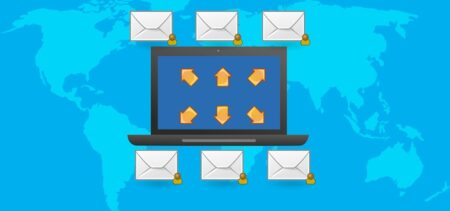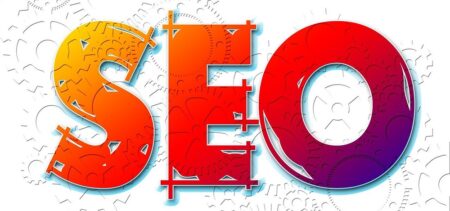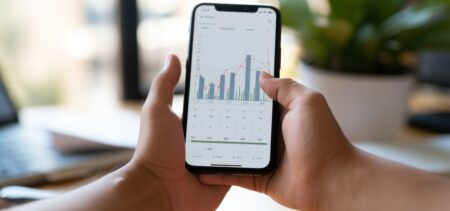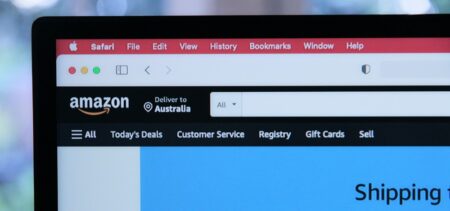So we tried the name ‘eCommerce Growth Hack of The Week’ for this growth hacking series but it turned out to be too long. We’ve shortened it to Growth Hack Mondays for now, but I’m still all ears if you’ve got a better name for the series.
Anyway, on to the actual post. This week’s growth hack, as the title suggests, is all about boosting demand for your physical product by selling, or giving away, digital products. A digital product can be a book, an audio file, a video, or even a software. Anything that your customer can download and access instantly.
But first, I want to tell you a little story. This story begins back in the year 1900, in the dark days before Facebook and House of Cards. Two brothers, Andre and Edouard, were running a tire manufacturing company in France. Back then, there were only 3,000 cars in the entire country, and, obviously, business was pretty slow.
To boost demand for vehicles, and hence tyres, the brothers decided to publish travel guides with maps, travel destinations, and ratings for restaurants and hotels across the country. They hoped that the guides would motivate people to buy vehicles and travel more.
They printed 35,000 copies for the first batch and distributed it for free. The guides were such a hit that within a few years they were being distributed across most of Europe and Northern Africa. Today the Michelin Guides are the authority on fine-dining across the world and the tire manufacturer, Michelin, is the largest in the world.
It turned out, growth hacking was a thing even back then! The Michelin brothers basically fuelled the demand for their products by giving away content. There were no PCs and no internet back then, so they had to make do with physically publishing them. However, today you have the luxury of producing the same content for a lot less money, and instantly distributing it to anyone in the world.
In this growth hack, we’ll look at some modern day case studies of increasing eCommerce sales by creating supplementary digital products, and the steps you need to take to replicate this hack.
Case Study #1: Lonely Planet
Of course you’ve heard of Lonely Planet. Who hasn’t? You’ve seen those blue books all over the world.
Like Michelin Guides, the Lonely Planet guides are the authority on travel destinations and things to do. Before the days when people didn’t have computers in their pockets, and couldn’t look up things to do with a few taps, it was necessary for travellers to buy physical guides.
However, the times, they are a changin’, and now people don’t want to be burdened with large books. These days, people plan shorter trips, and they want detailed information about a small region rather than general information about a large region. They also want something that’s up to date, and to continuously publish new versions to keep up with a changing landscape is just not feasible.
To adapt to the changes in technology and travel, Lonely Planet called me up and asked me pull out a growth hack from my magician’s hat. Ok not really, they came up with this on their own. They decided to start selling digital content on their website.
Even though they were making money from the digital content, the point was to ultimately drive sales of physical guidebooks. So they made digital content that complemented their physical guidebooks, instead of replacing or competing with them. They created time-sensitive guides for special events, reference maps, and audio phrasebooks and sold them for $5 on average.
The digital content has been a hit, with some of them being downloaded tens of thousands of times. Better yet, many people who download these products go on to order the full guidebooks.
Case Study #2:Wine Enthusiast
Wine Enthusiast produces the popular Wine Enthusiast Magazine. They also own Wine Express, an online retailer of wine.
The magazine has been around for a long time, and they sell a monthly digital subscription to it. They actually have a full time team of editors, writers, designers, and other creatives, to produce the magazine. The content is fantastic and readers love it. Of course, it costs to maintain a team like this but the monthly fee helps pay for it.
The important part is that the magazine is their largest source of organic traffic. They attract people with it, and then use the magazine to promote their wine and wine accessories. Their actual physical product sales directly benefit from this inbound traffic.
In fact, in 2012, the company was seeing a 150% increase in organic traffic and 50% increase in email subscribers for the year. That’s some pretty serious growth.
Case Study #3: Centerpointe
Centerpointe Research Institute is an online retailer of meditation audio technology. Their product is a powerful brain enhancement and stress relief tool. However, it’s tough to convince people of the benefits, so they send out demos.
They used to send physical demos in the form of CDs and books but the cost of producing and distributing them became inhibiting, so they switched to digital. They created a YouTube video and accompanying eBook.
Unlike the previous two cases, Centerpointe didn’t charge for their digital download. They were using it as a lead generation tool, so they gave it away for free.
Within 8 weeks of switching to digital, the book had been downloaded almost 2,500 times. 42 of these people immediately went on to purchase the product, but Centerpointe still have the rest in their email lists, and they can engage them with regular emails that will eventually convert more.
How It’s Done
This growth hack is actually pretty simple to implement. It’s mostly about creating the content. Here’s how you do it:
Step 1 – Figure Out What To Create
If you look at the examples and case studies mentioned here, you’ll see that the digital downloads were meant to complement the physical product. They basically provide additional value to customers, and that leads to a sale of the actual product.
If you sell products that are difficult to set up, you can create instruction or usage manuals. Better yet, if your products require a certain skill to handle them, you can create training books or videos. For example, if you sell SLR cameras, a course on photography will be a great digital download.
Step 2 – Create The Digital Download
Actually creating the digital download is pretty simple because of all the tools available out there. If your digital product is an ebook, you can use a site like Liberio. Write your ebook in a Google Doc and import it into Liberio. It will convert it into an ePub ready to publish.
If you’re creating videos or training modules, you might need some more equipment. Simple videos can be created using screencasting tools like ScreenFlow, but if you want to record something your smart phone probably has a decent camera.
Step 3 – Set A Price, Or Not
The actual price of the digital download is determined by how much effort it takes to produce. If it’s a simple ebook, you can probably give it away for free and use it as a lead generation tool. However, if it’s like the Wine Enthusiast Magazine, and requires a full time team, you might need to charge for to cover at least a part of the costs.
Ultimately, your digital downloads are meant to increase sales of your physical products, so that’s how they’ll bring in revenue. The actual price, therefore, shouldn’t really be too high.
Step 4 – Sell It On Your Store
The final step is to actually sell it, or give it away, to your customers. Since you’re trying to get people to come to your eCommerce store and buy your physical products, it makes sense to host your digital downloads there as well.
LemonStand has a digital downloads module built in to the platform. You can upload your digital product and sell it like any other product, or even set the price to $0 and give it away for free.
To make the growth hack more effective, you want to link your digital product to the corresponding physical product. So when someone downloads the digital product, you can upsell them on the physical product. Conversely, when someone buys a physical product, you can downsell them on the corresponding digital product.
And if customers are browsing a physical product and choose not to buy, you can offer them the digital product instead and convert them into a lead. Then, after nurturing them with email marketing, you can bring them back to purchase the real thing.
Time To Growth Hack
Whether you sell your digital downloads for money or for free, the effect is the same. They’ll attract traffic, and they’ll increase demand and sales for your physical products. Follow the steps laid out in this post and you’ll be on your way to growth hacking your sales with digital downloads.
If your eCommerce platform doesn’t support digital products, you can give LemonStand a try.




























